The beginning of Christianity in Illyria dates back to apostolic times
In this article, you will read about the history of Christianity in Albania since Illyrian times. And at the end of the article, some religious sites in Albania that you can visit are included.
The conclusion of the well-known scholar of the beginnings of Christianity, J. Zeiller, that “the beginning of Christianity in Illyria dates back to apostolic times” has now been accepted by the entire scientific world. Historical data of Christian communities, religious structures, archaeological findings, numerous linguistic elements, religious terminology, also Christian toponymy, provide all the evidence of the connection of the Christian religion with the Illyrians. It was an intense connection that an author of the VI century, Kozmas, included them in Christian communities.
Being in a unique geographical position, between two worlds, the East and the West, Albania became the typical country of such clerical phenomena as apostasy, conversion, proselytism, heresy, and finally, the country of two different perceptions of Christianity, the Western one (Roman Catholic) and the Eastern one (Byzantine Orthodox).
Roman Catholic Christianity and Byzantine Orthodox Christianity
Of course, it would be inaccurate to speak of a Roman Catholic (Byzantine) Christianity and Byzantine Orthodox Christianity in the first centuries. This division, came over time as a dogmatic division, first exploding in the IX century with the so-called “Photius schism”. Then in 1054, the great (and final) schism happened and it continues to divide the Christian world even today.
However, in the administrative-jurisdictional plan, the Illyrian prefecture church was part of Rome. But, politically it was part of the Eastern Byzantine Empire. The letters of the first popes talk about their close connection with the Diocletian metropolises, Durres metropolises, and Nikopoja metropolises. Also Byzantine Emperor, Justinian, strengthened the relationships of the Albanian metropolitan headquarters with Rome.
Since there were trends within this church, which over time lead to divergent developments within it, until the ultimate division between Rome and Constantinople.
Protestant Christianity
Protestant Christianity among Albanians begins with two letters by Robert Pinkerton, one in 1816 and the other in 1819. Pinkerton worked for the British and Foreign Bible Society.
In 1819, the Society gave £ 300 for the translation of the New Testament into Albanian, also Dr. Vangel Mexi was the translator. But Dr. Mexi died without completing the whole project. So, they offered the editorial work to Archbishop Grigor Gjirokastra, and in 1824 the gospel of Matthew was published.
The publication of the four Gospels
In 1827 the four Gospels were published in Corfu. A year later the entire New Testament was published in Greek. In 1828, Pinkerton wrote another letter to the Society to translate the psalms into Albanian. Alexander Thomson, who came to Albania and observed the need for missionaries, provided further assistance in this publishing service.
In 1864, the British and Foreign Bible Society succeeded in hiring Christoforidh. In 1865 two Englishmen came to spread the gospel as traveling salesmen, they also went to Peja, Prizren, Pristina, etc. Later there were other sellers, and the sellers were the only missionaries until 1873.
Kristoforidhi translated the entire New Testament from Greek in 1866. The New Testament was published in two dialects, and during the 1880s were published several Old Testament books.
The first two Albanians who became Protestants
1873 is an important year in the history of Protestant Christianity in Albania. Because, in that year, for the first time in Albania came three American missionaries: Xh. Berd, Xh. Marsh and Xh. Hauz. They settled in Monastery. Finally, the first two Albanians who became Protestants in 1876 were Nicholas and Dimitri (Nikolla and Dhimitri in Albanian) from Monastery.
In 1877 Gjerasim Qiriazi abandoned the Orthodox religion and accepted Protestantism. Then, after completing his Bible studies in 1882, Qiriazi worked hard to share the gospel. The work was more focused in Korça, but he also went to the Pristina Evangelical Church.
In 1884 Qiriazi held the first evangelical ministry in Albanian at the Evangelical Church in Thessaloniki. Also on this year, Qiriazi gave the main contribution to distributing evangelical literature in Albanian.
In 1890 Qiriazi was ordained “preacher of the Albanian people”.
For two years, until 1892, Qiriazi served with his sisters and other evangelicals in Korça for The Sunday School, The First School for girls, Evangelical Church, etc. Qiriazi died in January 1894.
But Albanian evangelicals did not abandon their faith, though the challenges were hard. At the beginning of the 20th century, more missionaries came to Albania. Above all, among them was the Kennedy couple, Edwin Jasques, etc. They offered assistance in founding the Albanian Evangelical Mission in 1922. During the following period, 1937-1939, the church of Korça grew big. As a result, until 1440 it was functioning. Then the Italian fascists dispersed it.
Other Albanian Evangelical churches
Regarding other Albanian Evangelical churches, unfortunately, there are no archived records anywhere. In Kosovo, there were two evangelical churches in Pristina. One was in operation until 1943, and the other was a Methodist church until the early 1960s. There is also evidence of prayer meetings of an evangelical group during World War II until 1949.
Various figures who have expressed their support for the Protestant Christianity among the Albanians were: Elena Gjika, Asdreni, Faik Konica, Naim Frashëri, Fan S. Noli, Nikolla Nacho, Pandeli Sotiri, Sami Frashëri, Mihal Grameno, Kristo Dako, Mid’hat Frashëri, etc.
The main characteristic of the Albanian evangelists was their renaissance vision for Albania, ie. building schools also the publishing and the distribution of books in Albanian. Such a vision found the support of all. Today we would probably still not have an alphabet in Albanian, without the role and contribution of Albanian evangelicals at the Monastery Congress in 1908.
Religious Sites in Albania
Ringjallja e Krishtit Cathedral ( Resurrection Cathedral )
Built around the end of the ’50s with the Albanian-Greek contribution, the cathedral was originally named St. George’s Cathedral. It was distinguished for its position in the city center, its typical Baroque architecture, silver and gold colors and a large number of icons. However, this cathedral would serve the locals for a short time. After the arrival of communism and the declaration of Albania as an atheist country, the cathedral would collapse in 1968. The city was one of the foundations of this religion, so the locals, with their strength and will, a few years after the nearly 50-year era of atheism, returned to the religious tradition more than ever. This desire mixed with the work of hundreds of locals made the “Resurrection of Christ” Cathedral come to light at the end of 1992. Today it is a great church with beautiful architecture. So, it is worth a visit.
Do you want to know what else to visit in Korca?
Check this article: What to Visit in Korça
St Stephen’s Catholic Cathedral (Shkoder Cathedral)
One of the most magnificent in the Balkans, St Stephen’s Cathedral in Shkodra has a remarkable survival story. Once upon a time, the cathedral was inside the walls of Rozafa castle until 1478, when the Ottoman occupation of the fortified city turned it into a mosque. Hundreds of years later, in 1851, Shkodra believers formally requested the Sultan in Istanbul to build the cathedral in Shkodra. Then, after 7 years, in April 1858, construction of the Cathedral began. The building resisted the destruction of the Balkan wars, the earthquakes, and the communist dictatorship. All the Catholic families of Shkodra, Pope Pius IX, the Sultan of that time and even the Emperor of Austria Franz Joseph, contributed to its construction. The cathedral is one of the largest in the Balkans. This Church is in the heart of the city, one of the most frequented areas by local and foreign tourists.
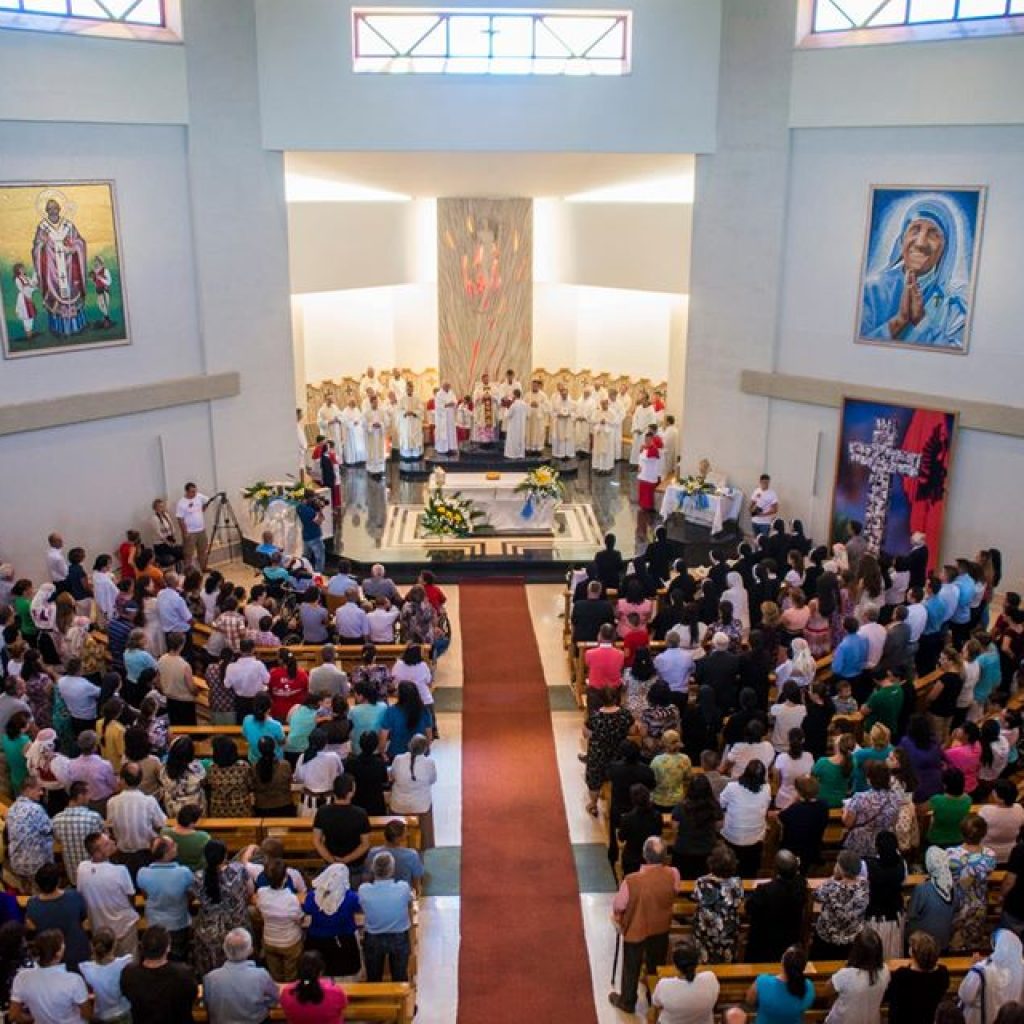
If you want to visit Shkodra, we offer you this tour: Shkodra Day Trip from Tirana
Ardenica Monastery
Situated on the top of the hill this lovely place gives the chance to get back in middle age history. Once you walk in the guy who looks after this place welcomes you and guides you in the Monastery. This place is so relaxing and peaceful, the original pictures from Kostandin Shpataraku are amazing. Accordingly to the Albanian Encyclopedia, a stone with an inscription bears the date of its construction in 1417. The Ardenica Monastery consists of the Church of St. Mary and the chapel of St. Triada. The Church of St. Mary according to the inscription on the murals was built in 1743 and was painted two years later by Athenian painters and Constantine Zografi. The iconostasis bears several icons belonging to Constantine the Swordsman, among which there is an icon of St. John Vladimir. The church features a triple basilica with a flat ceiling.
If you want to visit Ardenica check this tour: Ardenica and Apollonia Day Trip from Tirana
Saint Paul Cathedral
St. Paul’s Cathedral of Tirana was built at the end of 2001 and it is one of the newest and largest Cathedrals in Tirana. Its name recalls the Apostle Paul because he was the first evangelist in the Albanian lands in 52 AD. In a letter to the Romans, St. Paul states that “… he has spread the holy word to Illyria …” The Cathedral of Tirana has a very simple exterior beside the statue of St. Paul, located on the roof, but in the interior, there is a very impressive and detailed architecture. Also, inside you can find the monument of Mother Teresa and John Paul II. The cathedral is located on Jean d’Arc Boulevard. Its location near the main area of Tirana makes it easily accessible to anyone on foot or by public and private means of transport.
Wondering what else to do and see in Tirana?
Check this blog post: What to DO and SEE in Tirana
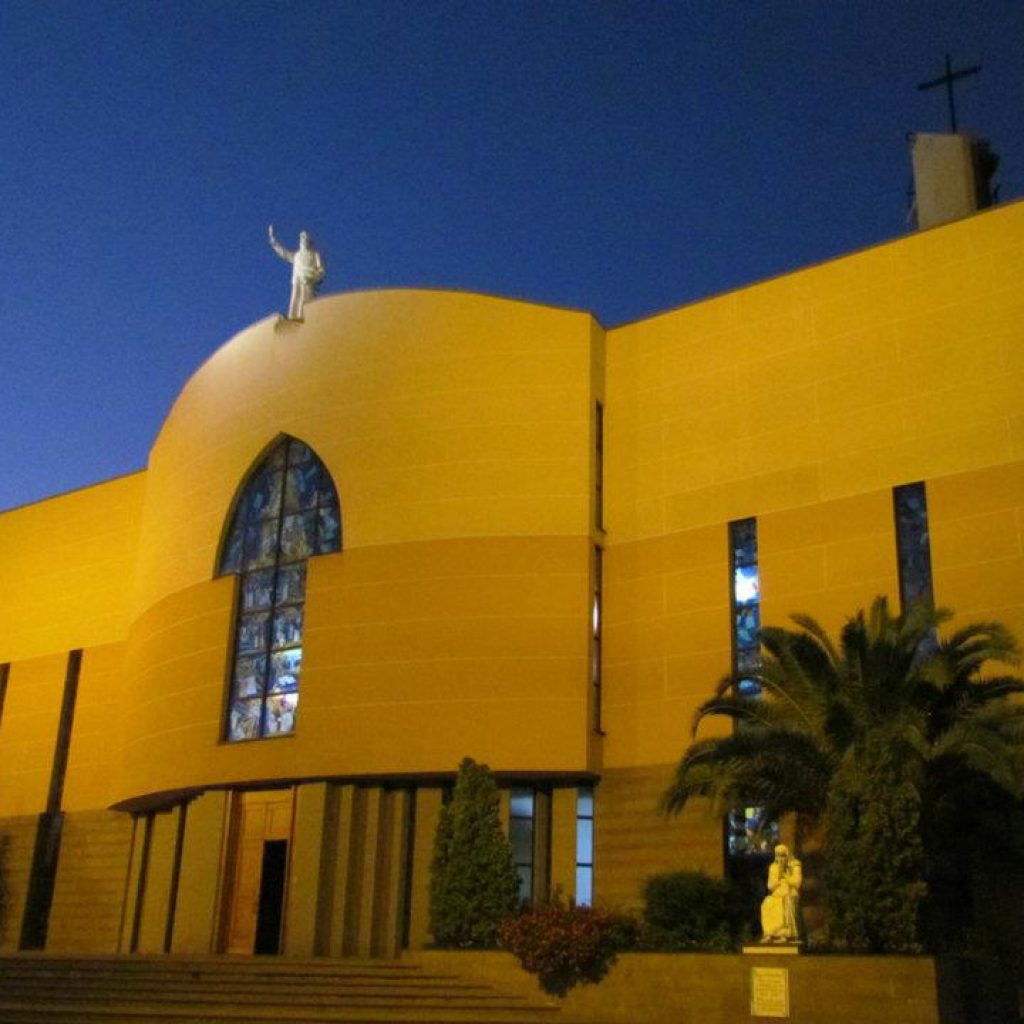
Church of Labova of the Cross
The Church of Labova of the Cross is one of the most interesting monuments in Albania. The Church is one of the oldest in Albania and once it contained a sacred relic, believed to be part of the real cross of Christ. The building is typically Byzantine with a high central dome. There are at least 9 distinct levels of frescoes painted on the surface of the interior walls. The church is mainly a 13th-century building, though it may be older and belongs to the time of Emperor Justinian. You can go there by following the road that leads to Libohova, starting from an eastern section of the highway of Gjirokastra. On the turn towards Libohova go left and continue on this road. You will see another separation, but both sections lead to the top of a hill. A few kilometers further you will find the church.
Saint Nicolas church, Voskopoje
The church of St. Nicolas is located in the center of Voskopoja and it is the most important church because of its architecture that has all the post-Byzantine elements that have survived until this day. This church has naos, narthex, arcade, and belfry. Part of the church of Saint-Nicolas was also the church of Saint-Efthimios, in its southern part, now destroyed. Naos style belongs to the traditional art school of Paleologists, also known as the Macedonian school. In 1960, the part of the arcade had serious damage due to a powerful earthquake, breaking off about 28 cm from the Naos. But a restoration team, undertaken in 1962 by the Institute of Cultural Monuments, did an excellent and professional job of restoring and consolidating it. Today some of the original icons are part of the Museum of Medieval Art in Korça.
St. Nicolas Church, Permet
St. Nicolas Church is located in the historic part of Permet. It has a basilica-style and according to the Codex of the Metropolis of Korça, it was built in 1757. On the west side of its altar, there are three guest houses for the welcome also the accommodation of the believers. Next to St. Nicolas is the church of St. Triada, which was built during 2006. The church of St. Nicolas is surrounded by a courtyard with 7 cypresses and a bell tower. St. Thomas Church is located at the end of Gorica neighborhood, Berat, on the national road Berat – Përmet, or, as the residents call it: the Drobonik road. Because, exactly where the Church of St. Thomas sits atop a pine-green Gorica Mountain, there are two roads: One road, the lower one, leads to Bilca and the other, above, leads to Drobonik.
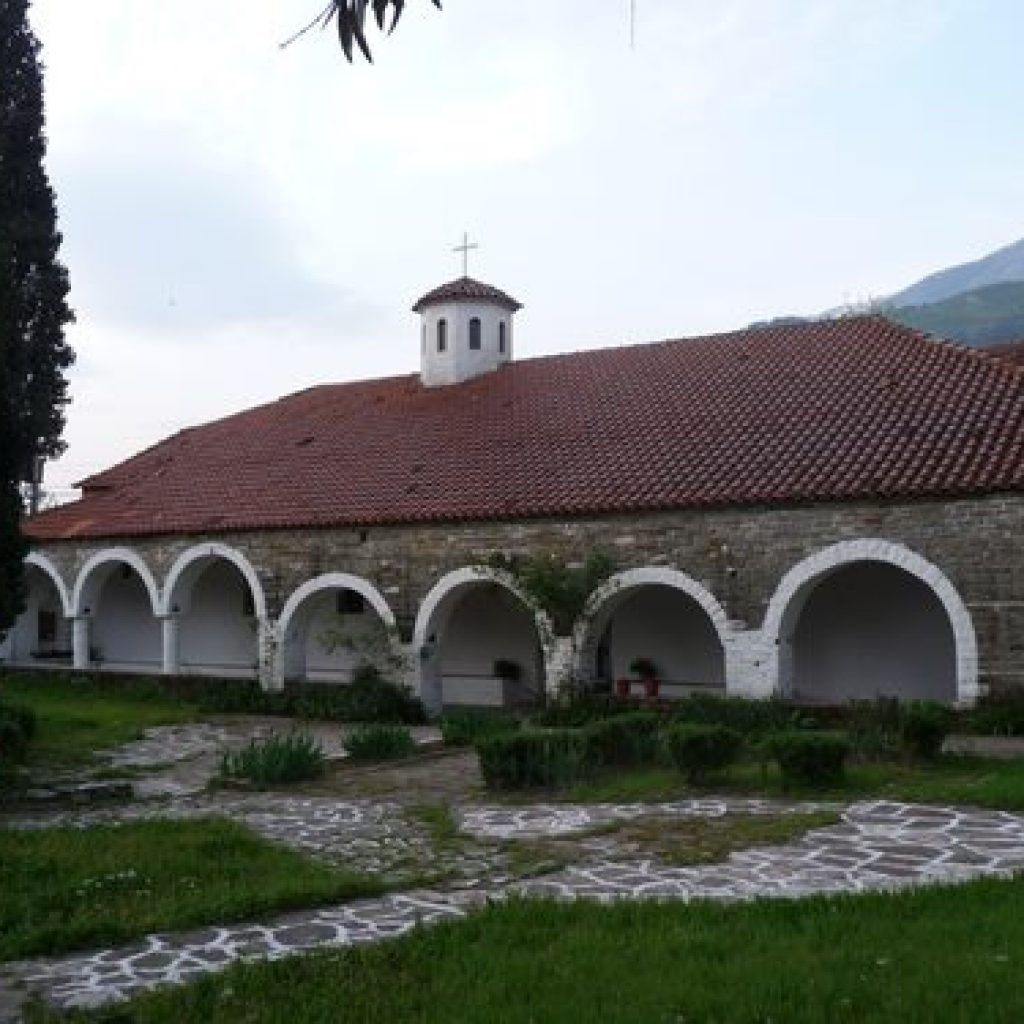
If you want to visit Permet check this tour: Permet Day Trip
St. George’s Church in Shipska
St. George’s Church in Shipska, declared a cultural monument of the first category, dates back to the XVIII century. According to data from the Regional Directorate of National Heritage, this object of worship is in good condition. The church consists of a naos, narthex, porch, bell tower, and a late building attached to the building on the south side and served as a shrine. The first three parts: the naos, the narthex, and the porch are located one after the other along the east-west axis. Meanwhile, on the west side lies the porch, which extends beyond the perimeter of the walls.
What else to visit in Korca? Check this blog: What to Visit in Korça
St. Mary’s Church, Elbasan
St. Mary’s Church is located within the walls of the Elbasan fortress (on its north side). It is known for its rare ethnocultural and architectural values in the region. According to the records of the codex of the Deliana family, the church was burned in 1818. But, from the date that is written in the outer wall of the apse, you can understand that it was rebuilt in 1833. This church is a three-nave basilica type construction with a half-spherical ceiling. On the west side is the narthex. On the east side, it has three apses where the central one has large dimensions. The church bell is built later, this is evident both in the style of construction and the material, red brick.
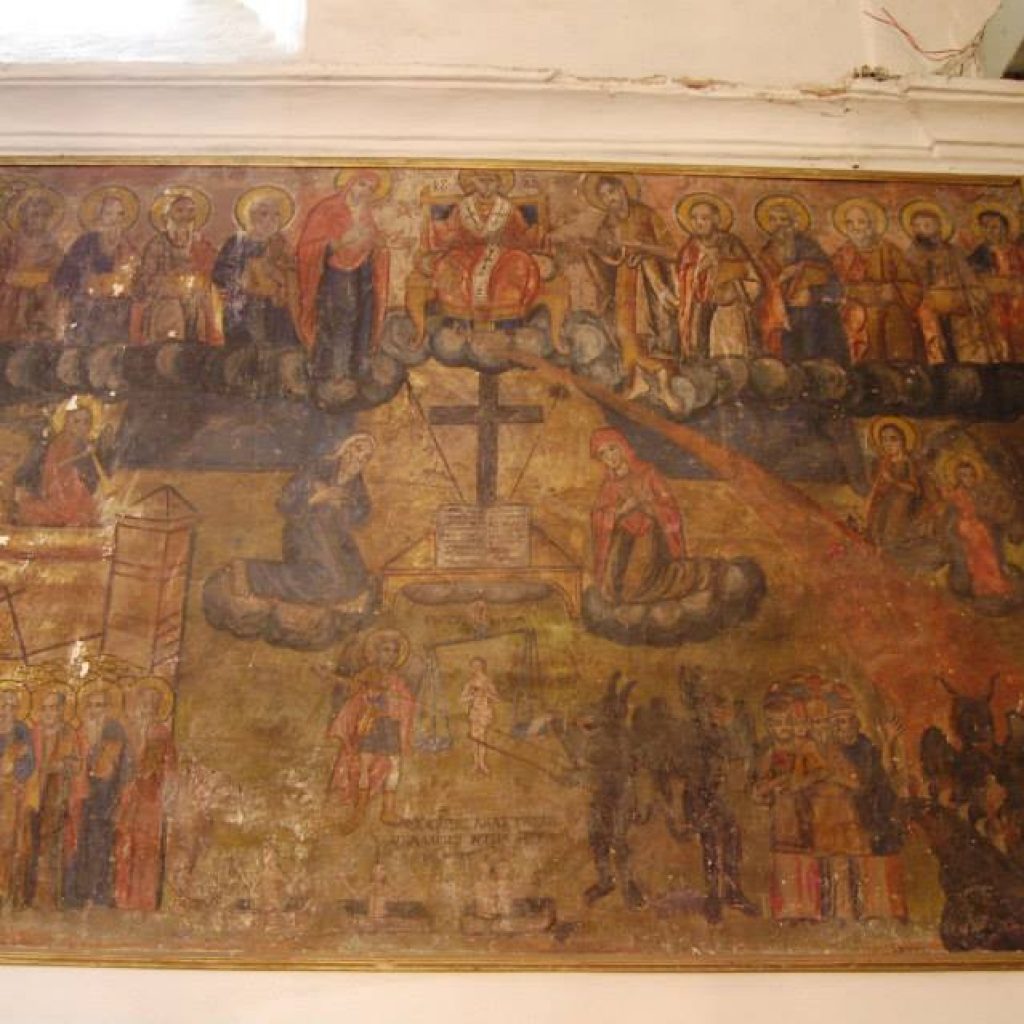
The St. Paraskevi’s Church, Permet
The St. Paraskevi’s Church rises by the brook on the south side of the city. It is of the basilica type of large size: 22 m long, 16 m wide and 8 m high. The church consists of 3 naves and it has a system of pumice stones connected with lime mortar and also covered with a double roof with stone beams. And finally, its interior decorations consist of wall paintings and wood carvings. The inscription in the stone slab refers to the church’s construction in 1776 by the master Ilia Christo, while the mural painting, with scenes from the Scriptures, is from painter Terpo Zograf, the son of Constantine Zograf, the fresco and icon painter from Mokra of Korça. Besides, the iconostasis and wood carvings are artistically done under the direction of Demetrius, the Albanian craftsman from Konica.

Saint Athanasius Church, Voskopoje
St. Thanas Church in Voskopoja is one of the most unique frescoes. The church dates back to 1721. Its location is in the northeast part of Voskopoja, in the Akamnel neighborhood. The church has two vaulted domes with spheres and spherical piers resting on two pilasters and eight pillars. The dimensions of the three nymphs are 19 m x 10.50 m x 8 m, and the height of the domes and nymphs is 9 m. The apse has seven blind arches and two lateral arches on both sides, crowning two small windows. The vault is 18.90 m long and 2.85 m wide, bordered by 6 arcades supported by 5 pillars and two capitals. Different from the old times, now the church serves as the church for the cemetery of Voskopoja.
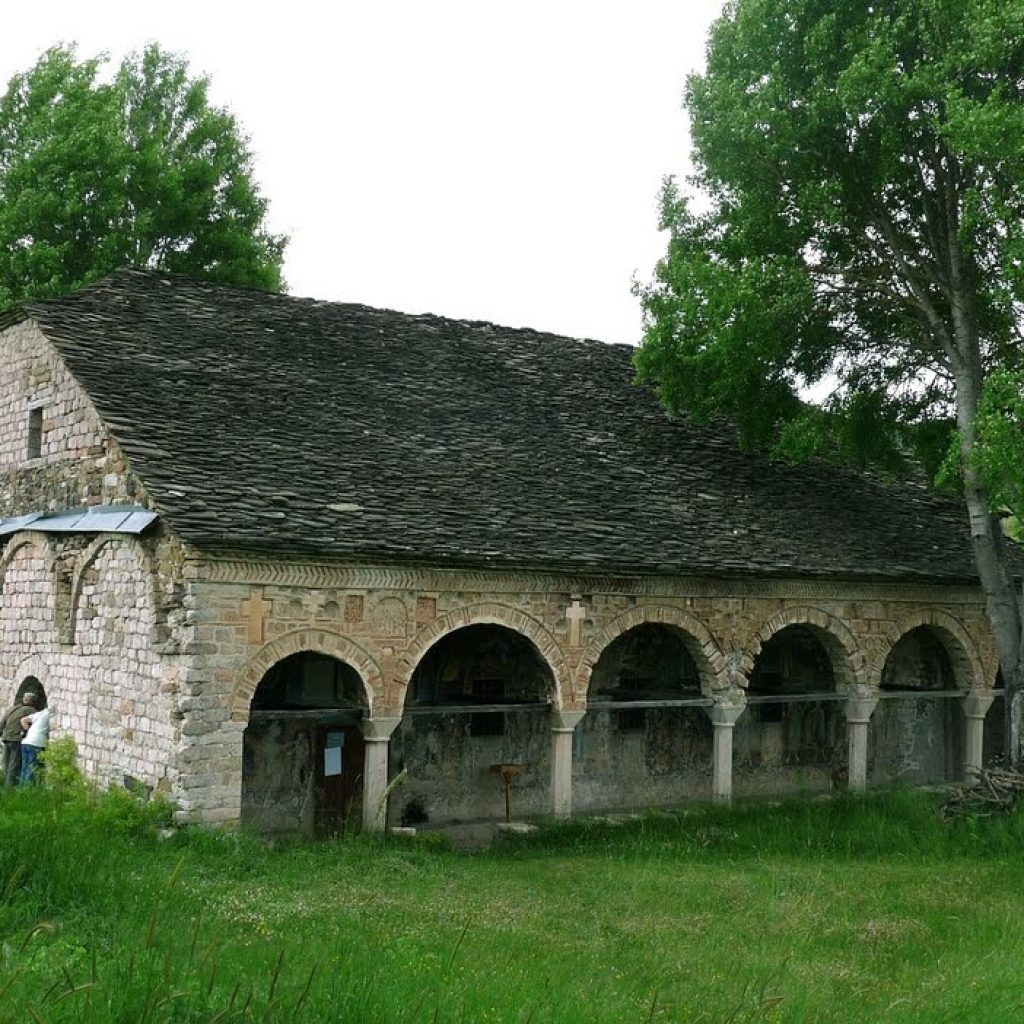
St. Michael’s Church, Voskopoje
St. Michael’s Church is of the basilica type, with dimensions of 33 m x 15 m x 9m. Two columns support it. The two rows of columns divide the naos space into two lateral naves and a central composite at the height of the naos volume. As well, arcs connect the columns in both directions. Based on their analysis, site surveys think that the facility has undergone several construction phases. In the initial phase of building, (in 1696) only the naos was built on the borders it has today. Then, in a second phase, the porches on the north and south sides were added to the building. The way the porches are built shows that these spaces are not built at the same time as the church, the masonry is well connected with the naos masonry.
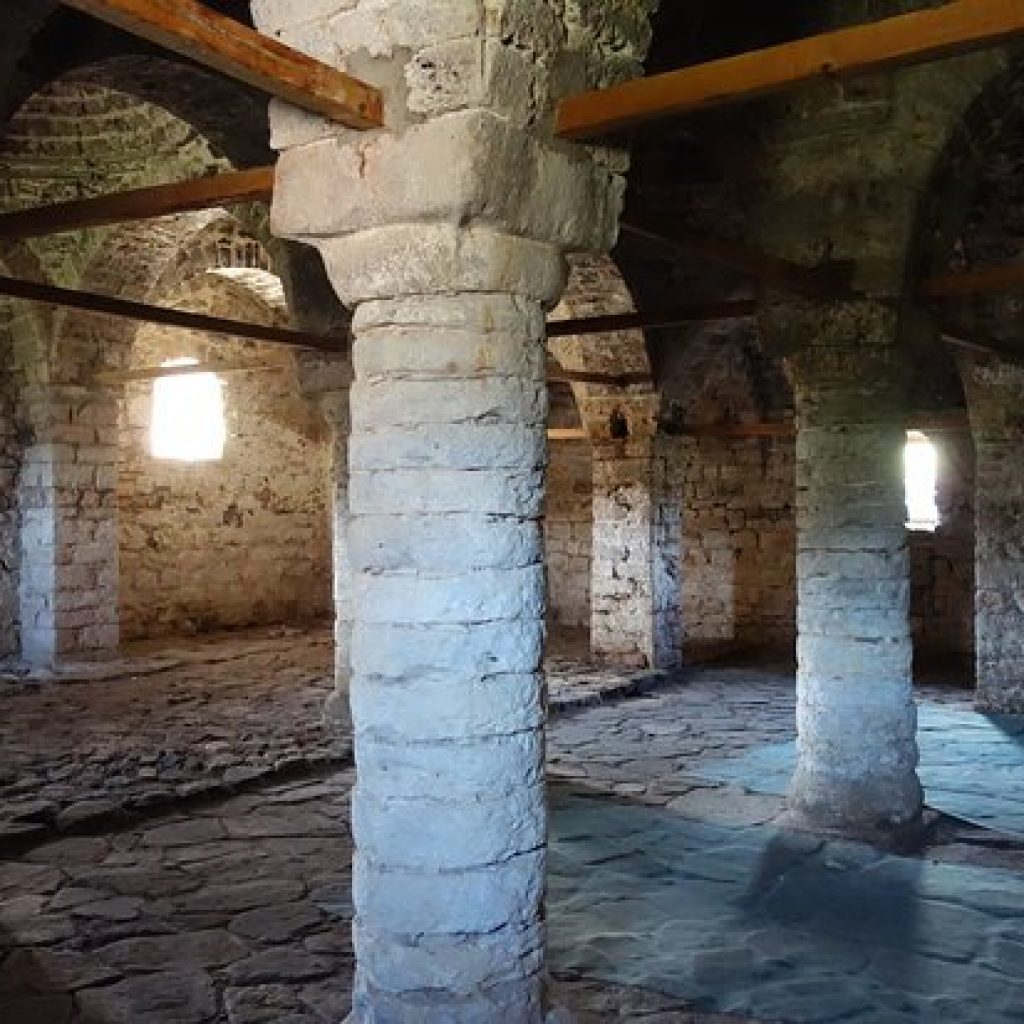
The Holy Trinity Church Berat
The Holy Trinity Church is a medieval Byzantine church that stands on a hill in the city of Berat in the Kalaja district of Southern Albania.
One of the historic centers Berat and Gjirokastër UNESCO World Heritage Site, the church has a cross-shaped plan with a dome.[2] It is composed of the nave, narthex (entrance area), and the altar alcove. In the church, many Byzantine architecture features have been skillfully used such as the inner organization of the space and the decorative and illuminative systems. These features, together with the pyramidal shape, forms, and proportions give the church a picturesque appearance. The Byzantine architectural elements in the church have been combined with western architectural elements belonging to the same period.
Inside the church are two columns with reused capitals (thought to have been taken from classical ruins in the city). An inscription inside the church contains the name of Andronikos Paleologous (Governor of the province of Berat from 1302 to 1326), indicating that the church must have been built during the 13th or 14th century with his financial support.
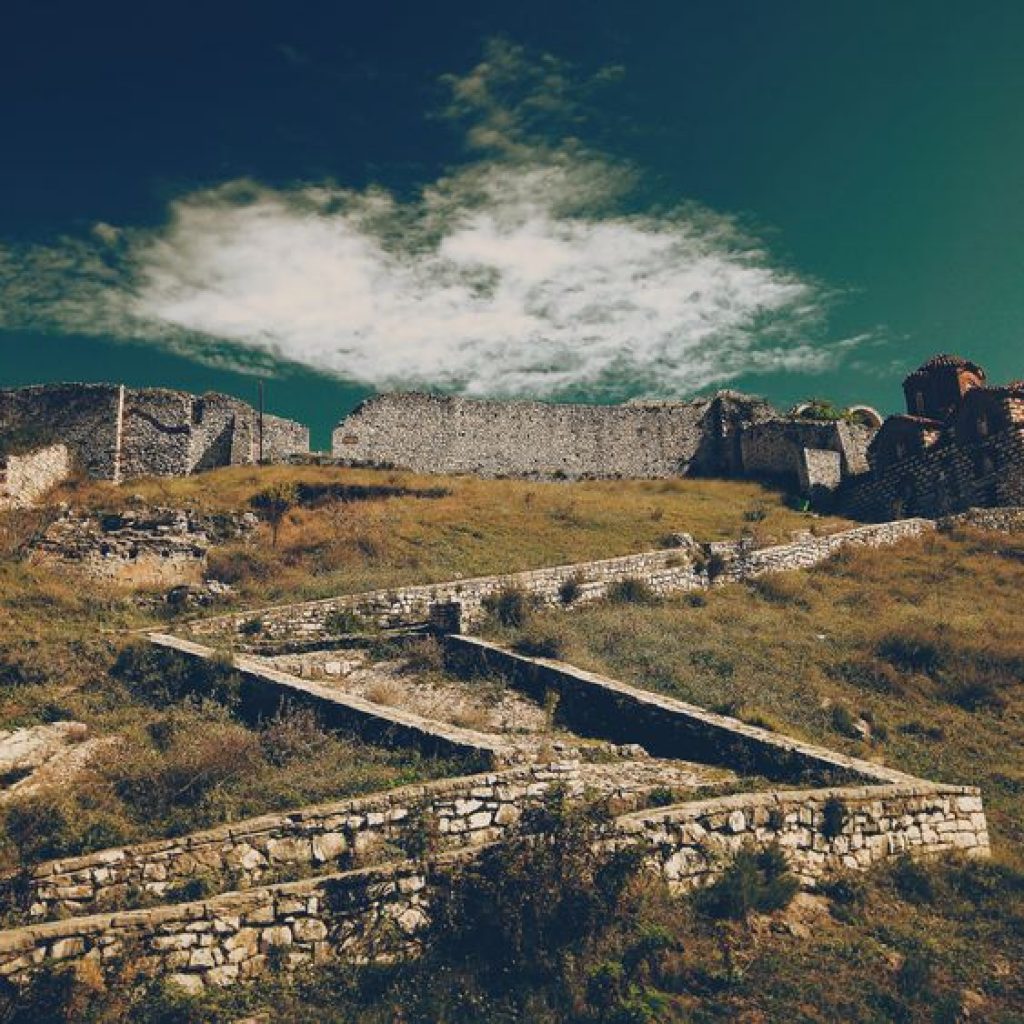
Are you into religious tourism?
Check this tour:
Info source: Roman Christianity in Albania, The history of the evangelical church in Albania.
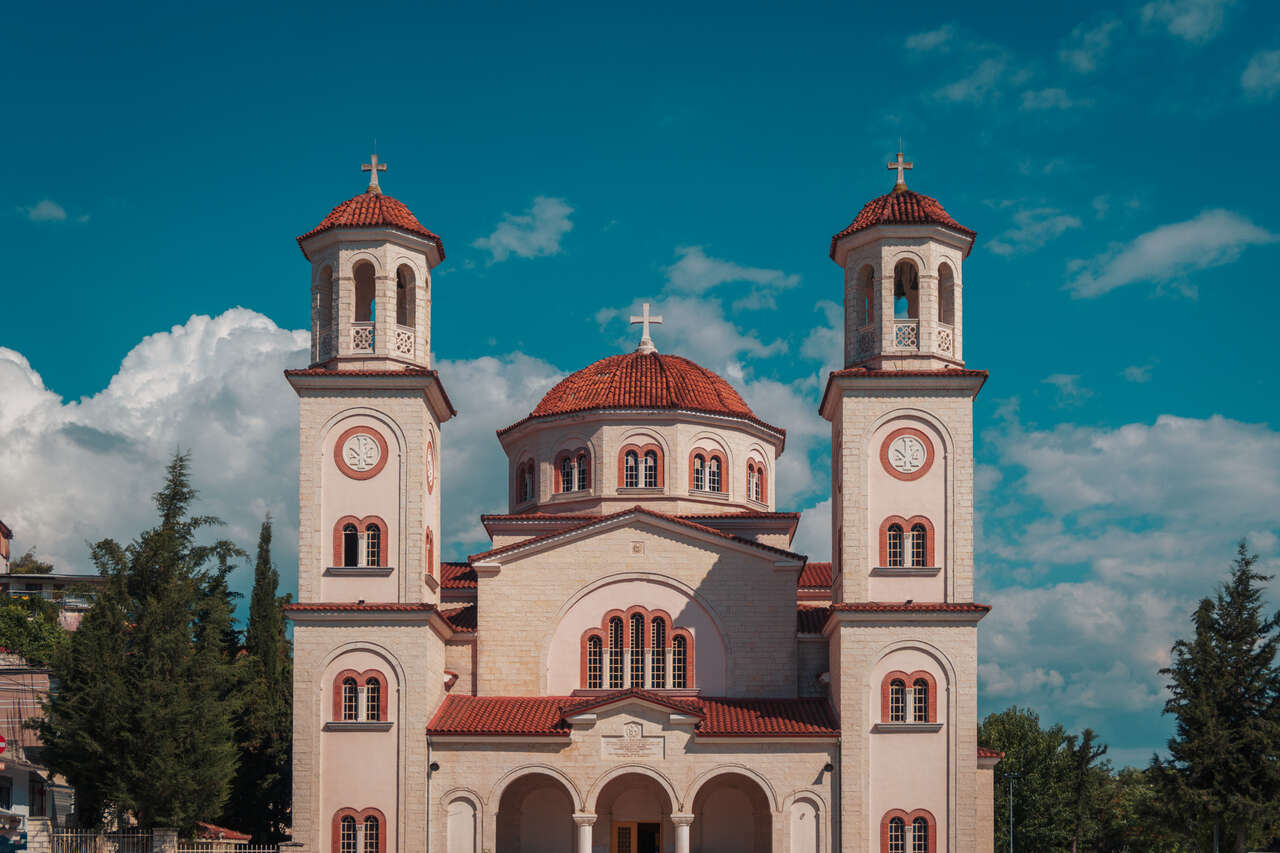
0 Comment